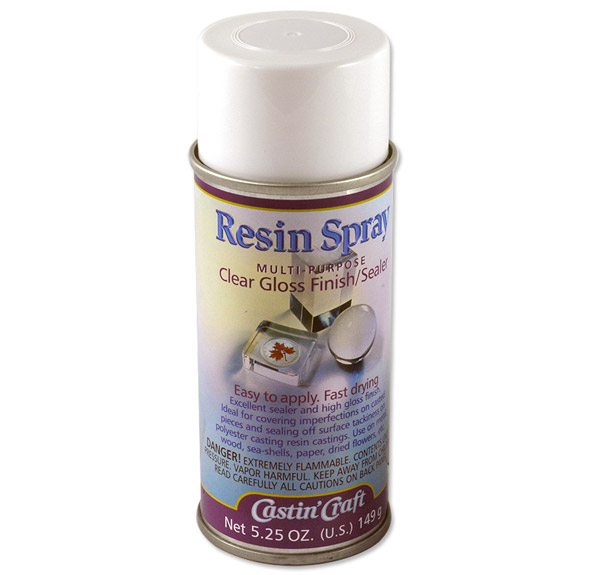Finally!
As frequent readers of my site may know, my husband is an organic chemist. What you may not know is that he worked in a cancer research facility in Boston nearly ten years ago. Being married to someone with that kind of background has its advantages. My husband knows more about the medications I am taking than the MD who prescribed them. He knows more about my prescriptions than the Nurse Practitioner prescribing them. Manufacturing medications commands a knowledge of chemicals and bio-sciences that most doctors and pharmacists don’t even touch. You can’t mix two agents and not know the effects. You’ll die if you get this wrong. Scientists who manufacture medications and who work at research facilities know their stuff.
One of the little treasures my husband pulled out of that facility was the truth about Sucralose. Also known as Splenda.
In short, a co-worker and friend of his who I will call “Bob” wrote his dissertation on Sucralose and what it does in the body. So what does Sucralose do in the body?
Sucralose and Aspertame turn into formaldehyde when it comes in contact with hydrochloric acid. Hydrochloric acid is the science word for “stomach acid.”
What is formaldehyde? In short, it’s resin. You know. Paint thinner. Liquid plastic.
From Wikipedia
The textile industry uses formaldehyde-based resins as finishers to make fabrics crease-resistant.[25] Formaldehyde-based materials are key to the manufacture of automobiles, and used to make components for the transmission, electrical system, engine block, door panels, axles and brake shoes.[26]
Two steps in formation of urea-formaldehyde resin, which is widely used in the production of particle board.When treated with phenol, urea, or melamine, formaldehyde produces, respectively, hard thermoset phenol formaldehyde resin, urea formaldehyde resin, and melamine resin. These polymers are common permanent adhesives used in plywood and carpeting. It is used as the wet-strength resin added to sanitary paper products such as (listed in increasing concentrations injected into the paper machine headstock chest) facial tissue, table napkins, and roll towels. They are also foamed to make insulation, or cast into moulded products. Production of formaldehyde resins accounts for more than half of formaldehyde consumption.
Formaldehyde is also a precursor to polyfunctional alcohols such as pentaerythritol, which is used to make paints and explosives. Other formaldehyde derivatives include methylene diphenyl diisocyanate, an important component in polyurethane paints and foams, and hexamine, which is used in phenol-formaldehyde resins as well as the explosive RDX. Formaldehyde has been found as a contaminant in several bath products, at levels from 54–610 ppm: it is thought to arise from the breakdown of preservatives in the products,[27] most frequently diazolidinyl urea. Since 2006, formaldehyde (methylene glycol) is also used in hair smoothing treatments in order to straighten wavy/curly hair and make hair less prone to frizz under high humid weather. OSHA Oregon has reported these treatments as unsafe for human health.[28]
I was floored when I learned of this ten years ago.
“Why don’t they do anything?” I asked Bob. “Why does the FDA allow this?”
“Big money,” Bob said. “Those in charge of certain companies pay big money to universities to keep things like this quiet.”
If your financial backer was responsible for making sure your employer stayed in business, would you expose them? Of course not. So the university awarded the doctorate to the student, accepted the dissertation, and buried the evidence that could ruin their financial backer. I, in turn, have triple checked ingredients on everything since. Sucralose and Aspertame are banned cancer causing agents in my house.
Due to slander, I can’t even give you the name of the university or the financial backer.
The word “sugarless” is a clue that sucralose and/or aspartame is present.
I stopped buying Swiss Miss instant cocoa mix, gum with the exceptions of Wrigley and Bubble-Yum by Hershey, breath mints, sugarless sodas, “diet” anything really or products labeled as “sugarless” or “calorie free.” I have never touched water flavoring mixes recently manufactured. Their primary and only ingredient is sucralose. Hmmm…. Liquid cancer. The list goes on. In addition to cancer, Bob’s research also proved that Sucralose and Aspertame also causes weight gain. How ironic is that?
For the record, tobacco products are less cancer causing than sucralose and aspartame. Just saying…
So here it is… the “official” article that released the news. Study: Splenda Linked to leukemia, tumors

I draw your attention to the fact that “the Center for Science in the Public Interest has added Splenda, the brand name for sucralose, to the list of artificial sweeteners for people to avoid.” Not the FDA, which still views Splenda as a cure to obesity, which is why they approved it way back when knowing—yes. They knew—it causes cancer. The FDA had the “cure to obesity” who cares if it gives them cancer?
Quoted from the Center for Science in the Public Interest
SUCRALOSE
Artificial sweetener: “No sugar added,” “sugar-free,” “diet” and other products, including baked goods, kettle corn, frozen desserts, ice cream, soft drinks, prepared meals, packaged (tabletop) sweeteners (Splenda).
Approved in the United States in 1998, sucralose—sometimes marketed as Splenda—is used in soft drinks, baked goods, ice cream, and other products, including ones you might not expect, such as frozen dinners and English muffins. It is widely used around the world. Unlike aspartame, sucralose is mostly stable at high temperatures and so can be used in baked goods.In 2016 an independent Italian laboratory published a large study on mice. The study found that sucralose caused leukemia and related blood cancers in male mice that were exposed to it throughout their lives starting from before birth. The study is superior to previous industry-sponsored studies that did not find a link with cancer, since those tested fewer animals, started exposing the animals beginning at adolescence, and terminated the study earlier. In addition, treated animals in the industry-sponsored studies had significantly decreased body weight compared to controls, which can decrease cancer rates. This Italian lab is the same one that several years earlier published studies that found that aspartame caused cancers in rats and mice.
When sucralose was first being considered for approval by the FDA, the Center for Science in the Public Interest objected. A study in rats had indicated that the additive might cause premature shrinkage of the thymus gland, which is part of the immune system. However, a subsequent study did not find any problem. Likewise, industry studies designed to detect whether sucralose could cause cancer in lab animals did not find any problems.
Several researchers contend that sucralose negatively impacts the gut, including changes in the microbiome and enzyme levels. That could have a range of consequences, including inflammatory bowel disease, how drugs and other chemicals are absorbed and metabolized by the body, and the regulation of body weight, possibly leading to obesity. For example, a 2008 study (funded by the sugar industry) reported that Splenda significantly reduced beneficial bacteria and had other effects in the gastrointestinal tract of rats that could affect the bioavailability of drugs. Unfortunately, the study was small and had other significant shortcomings. A 2012 study found a close correlation between changes in the incidence of inflammatory bowel disease (IBD) in different regions of the world and the use of saccharin and sucralose. However, finding a correlation is a long way from demonstrating a cause-effect relationship. Meanwhile, people experiencing IBD or other GI symptoms could see if avoiding sucralose provides any relief.
Even setting aside these concerns, young children could exceed the FDA’s “acceptable daily intake” for sucralose (5 mg/kg), especially given sucralose’s popularity (more products containing sugar substitutes use sucralose than any other sweetener). For example, a 6-year-old child weighing 45 pounds would exceed the FDA limit by drinking two or three 12-ounce sodas containing the typical 40-60 mg of sucralose per can. In addition, sucralose passes into breast milk at detectably sweet levels.
A final point: McNeil Nutritionals long advertised Splenda as being “made from sugar, so it tastes like sugar.” That statement may be literally true, but is misleading, as the Sugar Association charged in a lawsuit. In fact, the sweetener is a synthetic chemical made by chemically reacting sugar (sucrose) with chlorine. (The mere fact that sucralose is synthetic does not make it unsafe.) The lawsuit was settled without any announcement of the terms, but McNeil has dropped its “made from sugar” slogan.
Oh! We also have the cure to all cancers, which is found in the most common of metals right here on earth. Scientists know this. Big Money/Governments don’t care. Again… Big Money/Government has another agenda while our loved ones die from cancer. Just an FYI. I’ll post that article later this week.
Search “aspartame and hydrochloric acid effects on humans” also search “sucralose and hydrochloric acid effects on humans.” The reading is there… if you know to look.
Further reading…
Enjoy Alcohol without Sacrificing Health
Toxic Chemical Being Sold as Sweetener

